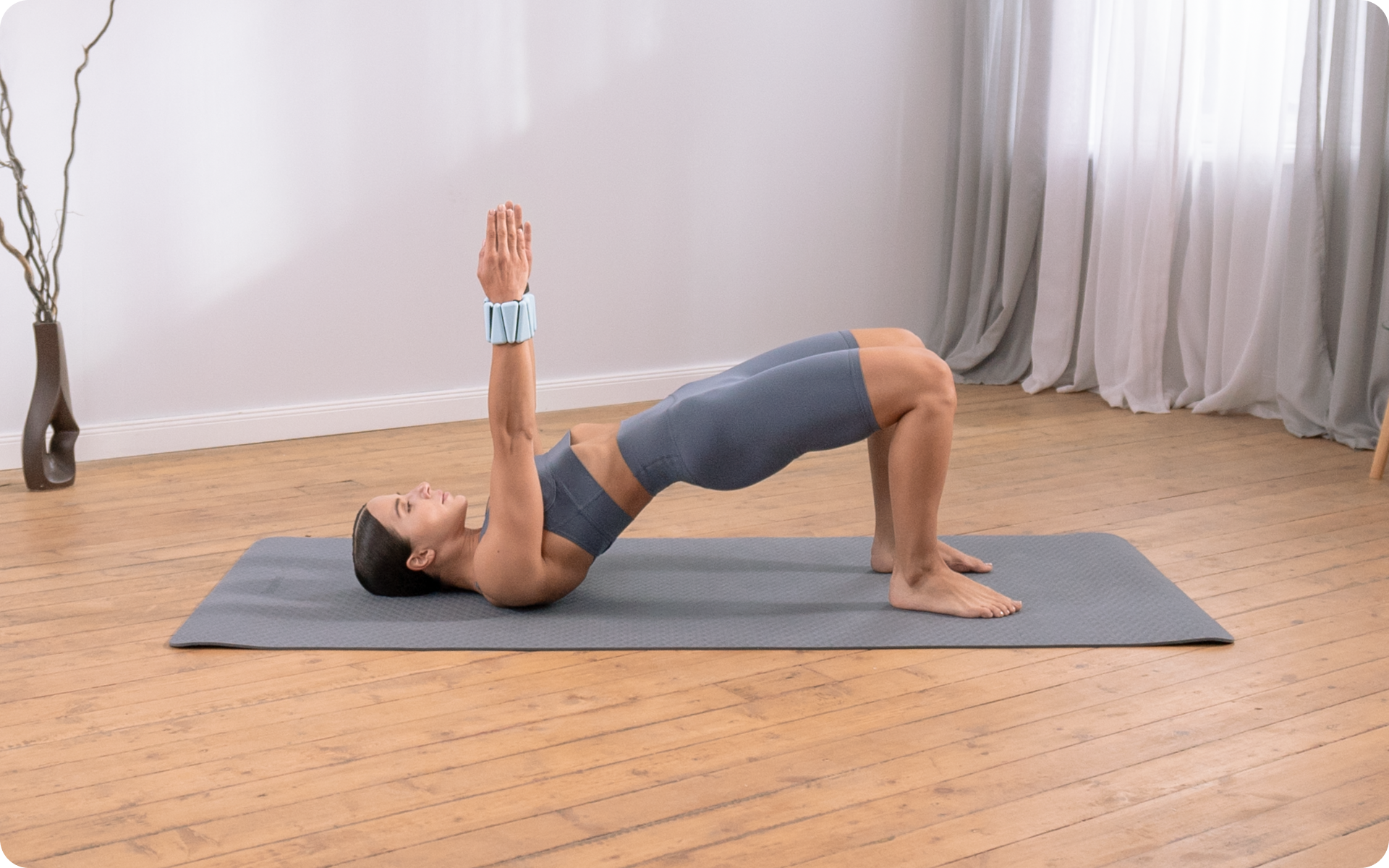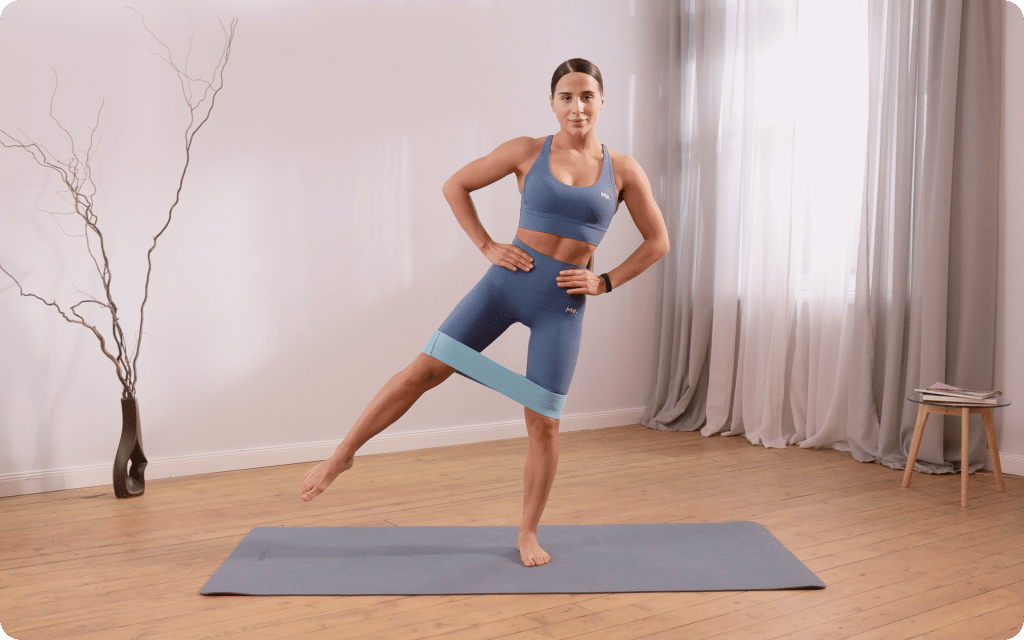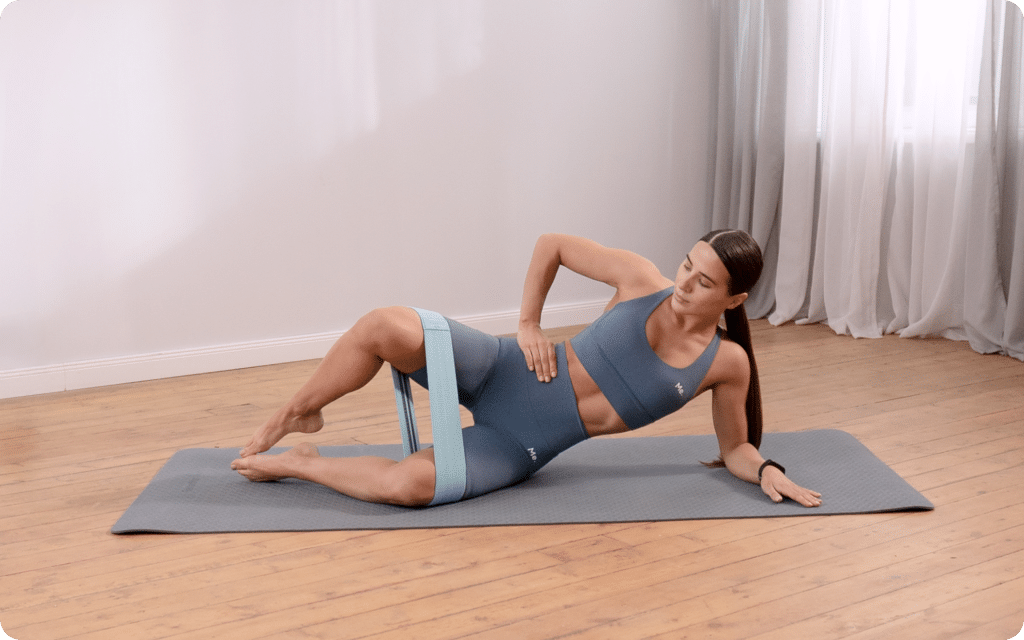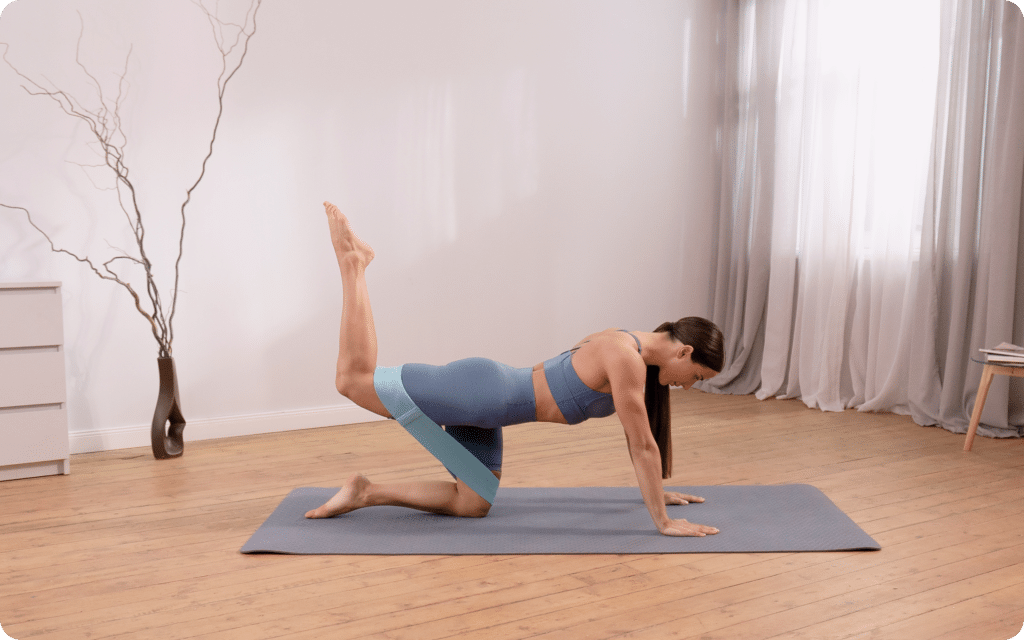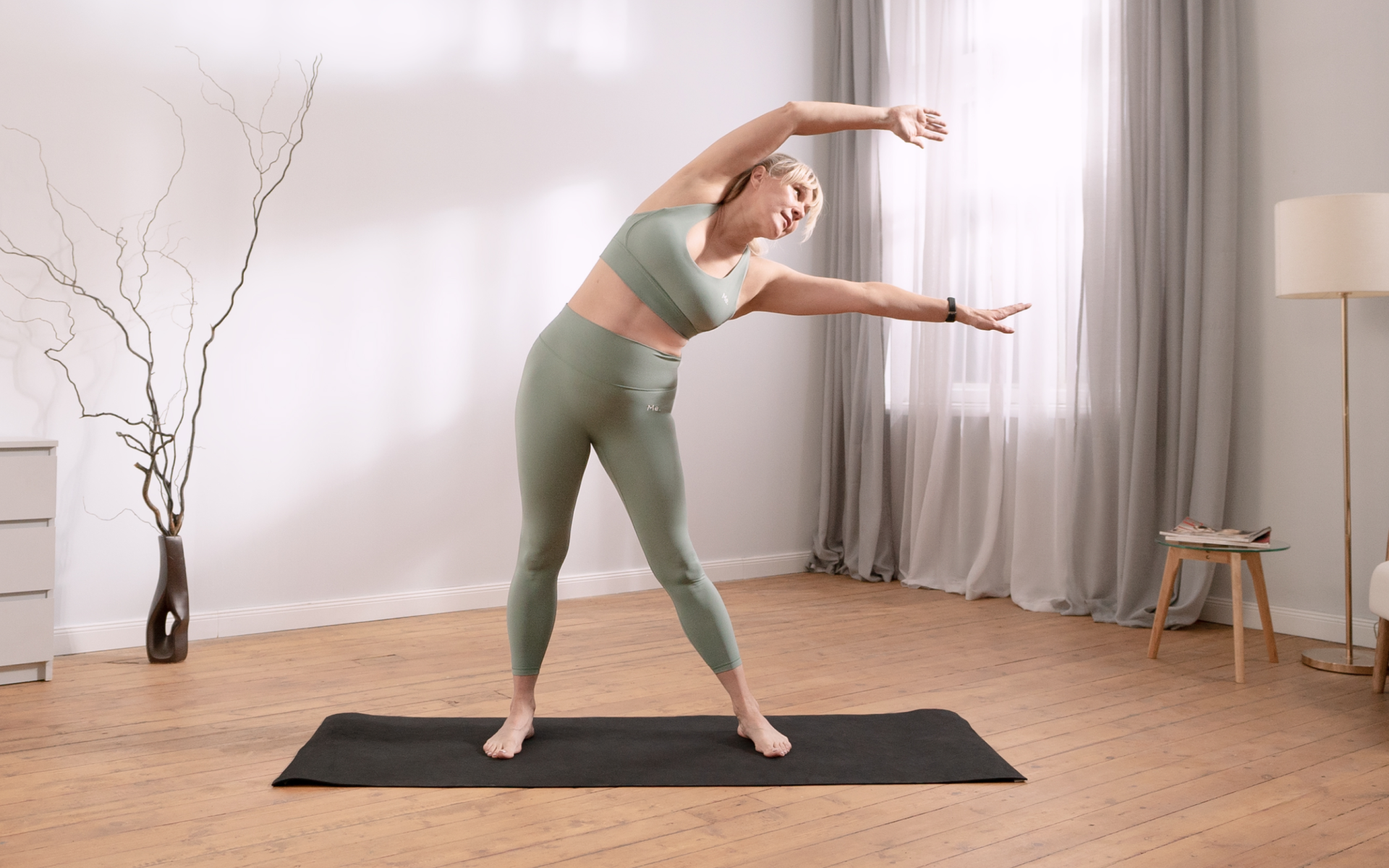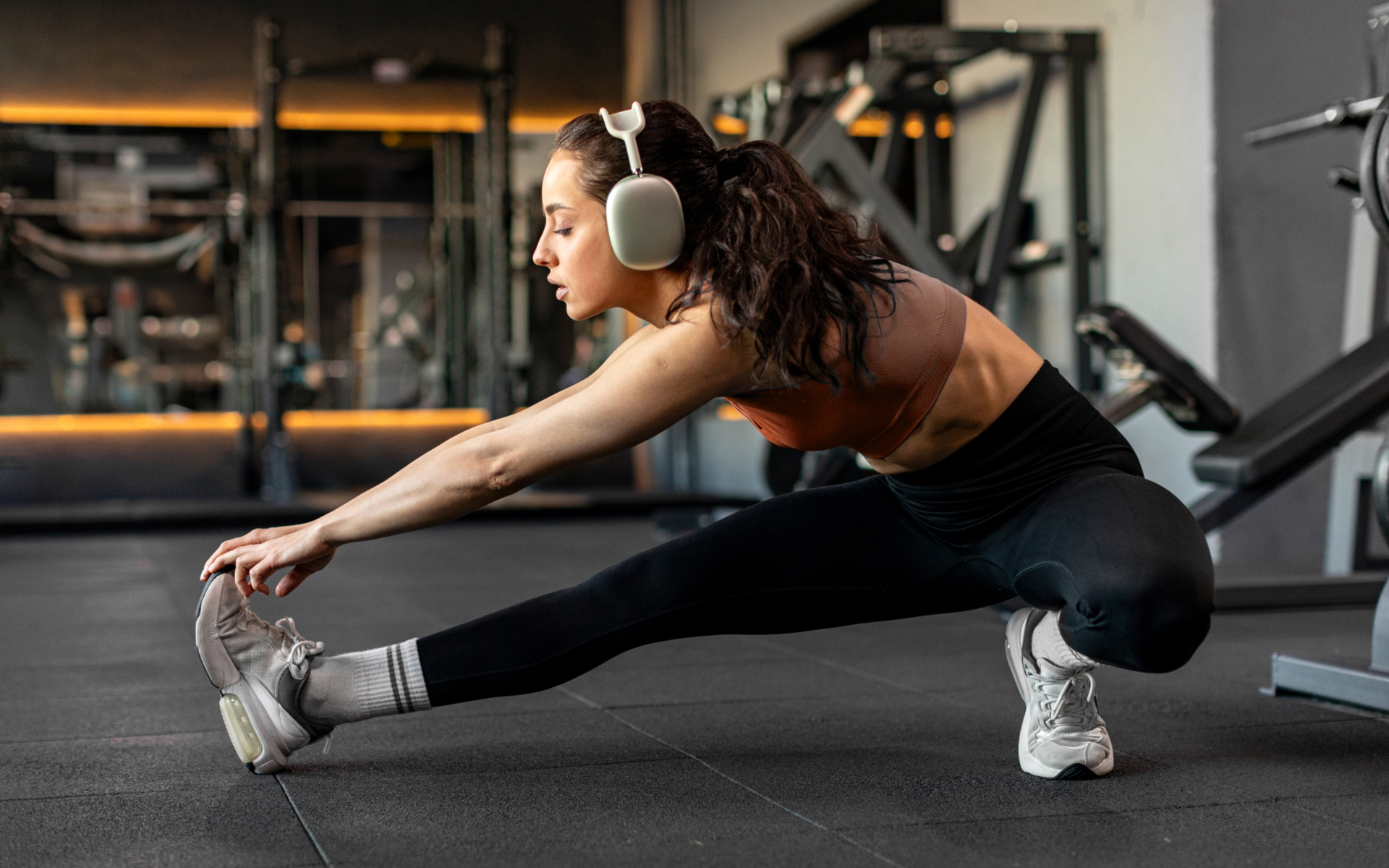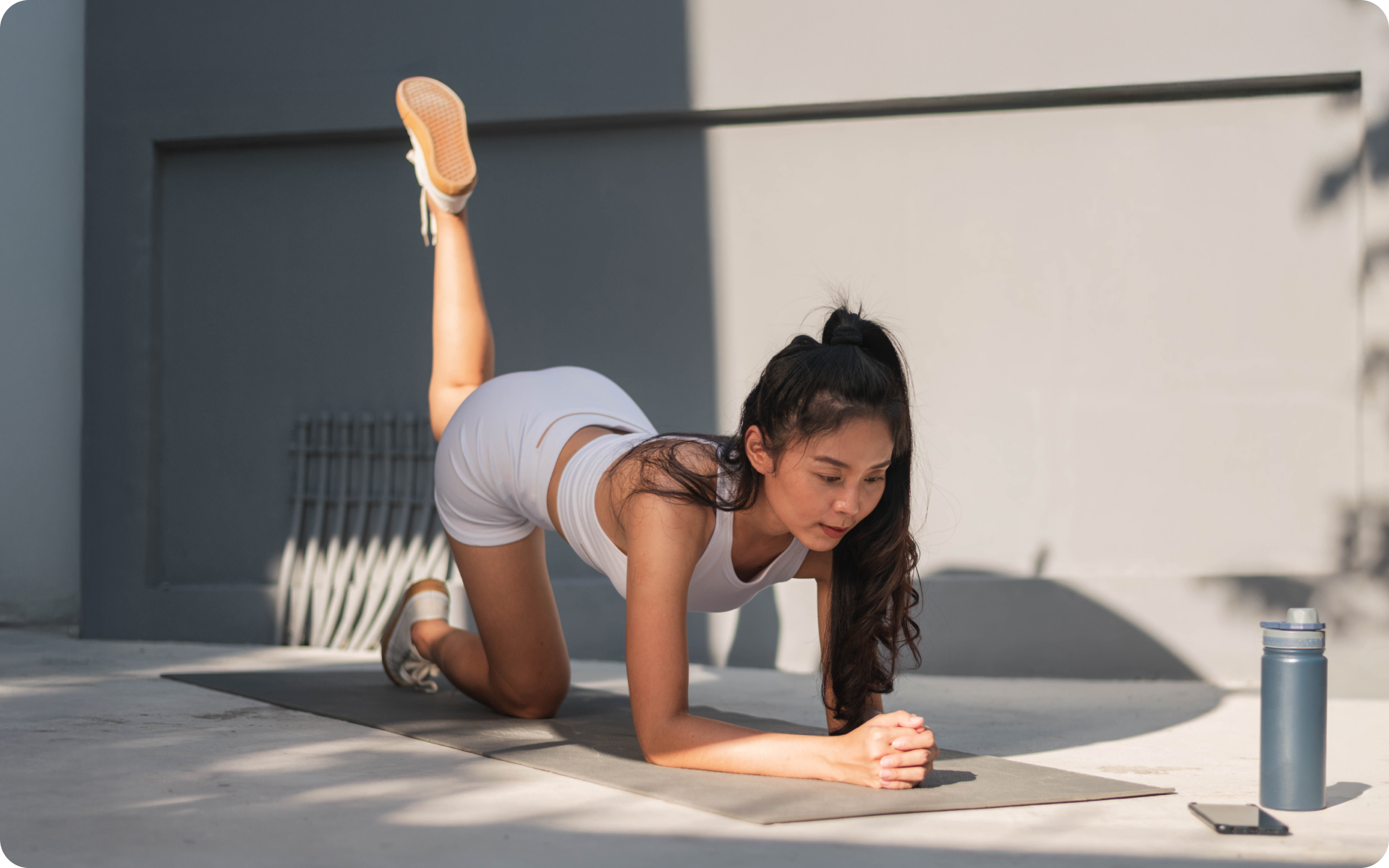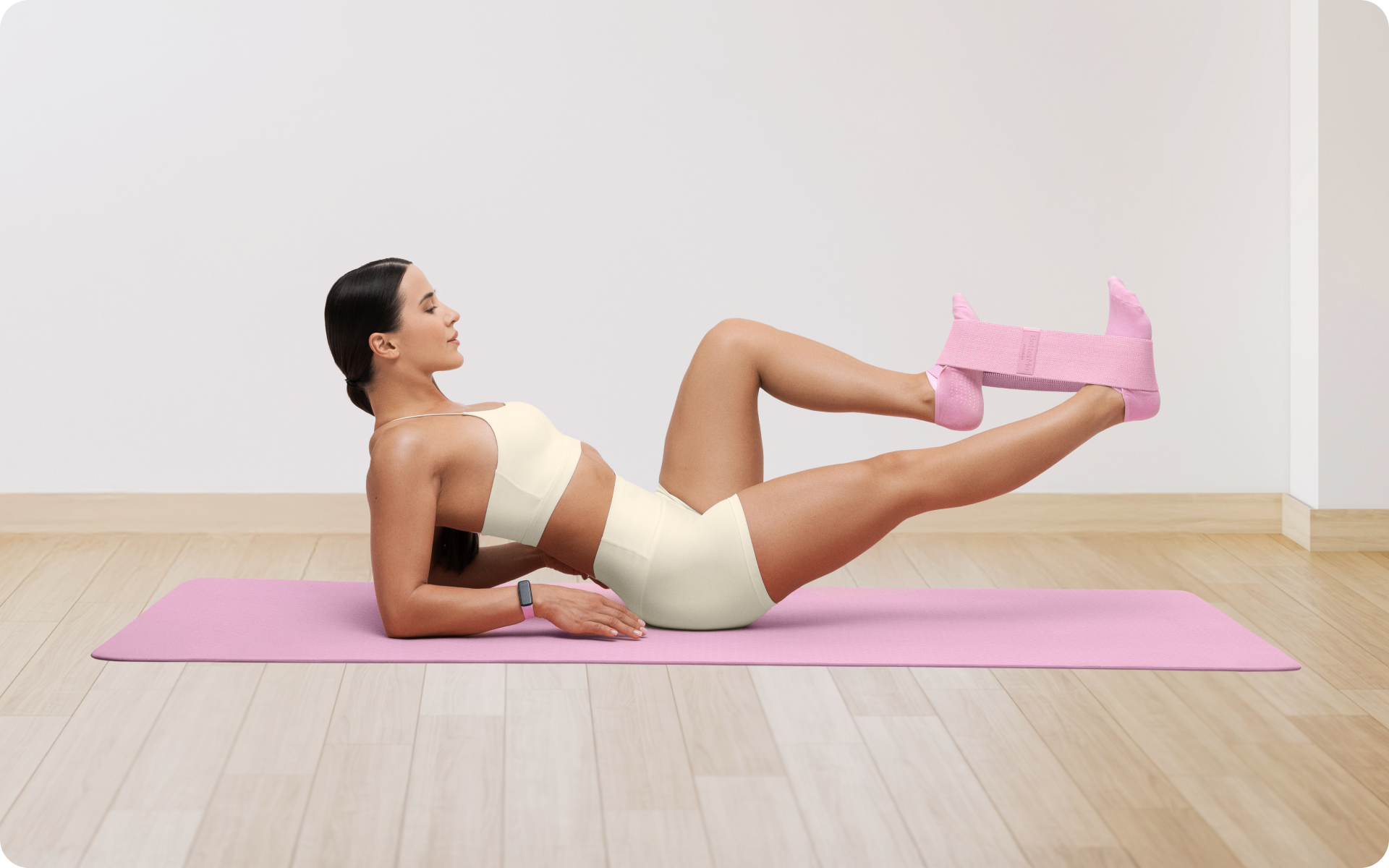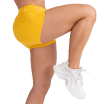If you’ve ever wandered into the gym wondering what to do, or worse, bounced between random workouts without seeing much change, you’re not alone.
That’s where the push-pull legs routine steps in like a breath of fresh air. It’s not flashy. It’s not trendy. But it works. And that’s what matters.
This routine isn’t some magic pill. It’s a method, a structured system built on simple human movement patterns.
- Push days are for exercises that help you shed weight away from your body.
- Pull days draw strength toward you.
- And leg days are the foundation.
When you split your training in this way, your body receives the targeted challenge it craves without burning out.
What makes the push-pull legs routine so effective is that it respects your time and your biology. Whether your goal is muscle growth, improved mobility, fat loss, or consistent training, this format helps you train smarter, not just harder. And in a world obsessed with overdoing it, that kind of balance is necessary.
What Is The Push-Pull Legs Routine For Full-Body Gains?
One of the biggest challenges in the gym isn’t motivation, it’s knowing what to do once you get there. That’s where the push-pull legs routine earns its stripes.
It strips the fluff out of fitness and gets you laser-focused on movement patterns that matter.
At its core, this routine is about training smarter. Each workout targets a specific set of muscles based on the way they work together in real life (1):
- Push Days: Focus on the chest, shoulders, and triceps, which are muscles that push weight away from your body.
Example moves: pushups, overhead presses, tricep pushdown.
- Pull Days: Train the back and biceps, which challenge muscles that pull weight toward you.
Example moves: bent-over rows, pull-ups, bicep curls.
- Leg Days: Target the quads, hamstrings, glutes, and calves, your foundation.
Examples of effective moves include: squats, lunges, and Romanian deadlifts.
This structure isn’t just neat — it’s incredibly efficient. Over a week, you’re giving your body a full-spectrum challenge without overtraining any single group.
Why It Works:
- Optimized recovery: While one group works, the others rest.
- More training days: You can hit the gym more often without overloading.
- Full-body benefits: Gains in strength, balance, endurance, and muscle tone.
- Improved posture and mobility: Because every muscle group gets its time in the spotlight.
And here’s the thing: when you consistently train all your major muscle groups with this kind of attention and intensity, full-body gains aren’t just a maybe, they’re a guarantee.
Benefits from PPL Routines:
- You’ll build strength
- Improve symmetry
- Support better posture
- Enhance everyday movements, from carrying groceries to climbing stairs (2).
So if you’ve been chasing progress but keep hitting walls, maybe it’s not you, maybe it’s your plan. The push-pull legs routine might be the upgrade your training has been begging for.
Reasons why BetterMe is a safe bet: a wide range of calorie-blasting workouts, finger-licking recipes, 24/7 support, challenges that’ll keep you on your best game, and that just scratches the surface! Start using our app and watch the magic happen.
What Is A PPL Workout Routine?
The term “PPL” is just shorthand for push-pull legs, but don’t let the simplicity fool you.
This training split has been around for decades, quietly powering up everyone from competitive lifters to everyday gym-goers who want a workout that makes sense.
A PPL workout routine divides your weekly training into 3 focused sessions:
- Push workouts: You train all the muscles responsible for pushing, mostly the chest, shoulders, and triceps.
- Pull workouts: You shift focus to pulling muscles, primarily your back and biceps.
- Leg workouts: You target your entire lower body — from the glutes and hamstrings to the calves and core stabilizers.
So, why is this setup so popular? Because it’s grounded in how the body naturally moves. It doesn’t cram random exercises into a session. It follows a flow that respects how your muscles work together in real life. This routine isn’t just about building muscle — it’s about moving better overall.
If you’re curious about the 4-day push-pull workout routine, check out our earlier article.
Key Features Of A PPL Workout Routine:
- Efficient structure: Muscles that work together, train together.
- Balanced progression: Each muscle group gets adequate time for recovery and growth.
- Scalable frequency: You can run a 3-day, push-pull legs routine 4 days or even 6-day PPL split, depending on your goals and recovery ability.
- Beginner- to pro-friendly: Easy to scale up or down based on experience level.
The best part? It doesn’t matter if you’re just stepping into the gym or you’ve been training for years — a push-pull legs routine can meet you exactly where you are.
It brings order to the chaos and gives your workouts structure without rigidity.
Whether your goal is to build lean muscle, increase strength, or simply become more consistent with your training, this method provides the blueprint — all you have to do is show up and put in the reps.
Read more: At-Home Leg Workouts That Actually Work: No Gym Needed
Is Push-Pull Legs Routine Effective?
Let’s cut to the chase, effectiveness isn’t about how fancy a workout is.
It’s about how well it delivers consistent results over time. And in that department, the push-pull legs routine checks every box. It can hit every major muscle group, promote proper recovery, and create a schedule that you can stick with. That’s the trifecta.
At its core, the PPL split respects how your body operates.
Muscles don’t work in isolation because they function as teams. So grouping them into push and pull movements ensures that you’re training efficiently, not just randomly throwing exercises together. More importantly, it gives your muscles time to recover while you’re still staying active, which is where the magic of muscle growth happens.
Why It Works:
- Better muscle engagement: You’re not rushing through 8 different muscle groups in 1 session. You’re giving each one the focus it deserves.
- Built-in recovery: By alternating muscle groups, you avoid overtraining and reduce the risk of fatigue or injury.
- Volume without burnout: You can train more often without feeling wrecked after every session.
- Adaptability: It suits a wide range of goals — from muscle building to fat loss, strength training, or simply staying active.
Take someone trying to follow a typical “arms one day, chest the next” plan — it often leads to muscle overlap and inconsistent recovery. The push-pull legs routine, on the other hand, eliminates guesswork and supports consistent weekly progress.
Especially when done with progressive overload and solid nutrition, it’s a powerhouse approach.
Is Push-Pull Legs Better Than Full Body?
This comparison is the million-dollar question. Is the PPL routine better than a full-body workout?
The answer isn’t one-size-fits-all, but what we can say is this: they each have their strengths, and the better option depends on your goals, experience level, and available time.
Here’s a side-by-side breakdown:
| Feature | Push-Pull Legs Routine | Full-Body Routine |
|---|---|---|
| Training Frequency | 3–6 days/week | 2–4 days/week |
| Time per Workout | 45–75 mins | 30–60 mins |
| Muscle Group Focus | Specific muscle groups per day | All muscle groups in each session |
| Recovery Time per Muscle | 48–72 hours | 24–48 hours |
| Fatigue Risk | Lower (due to split focus) | Moderate to high (depends on intensity) |
| Best for | Building muscle, strength, and advanced routines | Beginners, general fitness, time constraints |
| Customization | High — easy to tailor for goals/schedule | Moderate — can be repetitive for people who do best with variety |
Now, let’s break that down into real-world terms. If you’re someone with 4–6 days to hit the gym and you’re chasing gains in strength or physique, the push-pull legs routine offers better control (3). You can hit each muscle group harder, with higher volume, without stepping into the overtraining danger zone.
On the other hand, full-body routines are ideal if you’re short on time or just starting.
They allow you to train everything 2-3 times a week, so you still see results without being locked into a rigid schedule.
Final Thought
- If you’re aiming for muscle growth, have moderate to high experience, or want to train more often, → Push-Pull Legs Routine.
- If time availability is a challenge, you’re a beginner, or you want a simple gym routine for weight loss and toning female or male, → Full-Body Strength Training Routine.
Both can work. However, if structure, efficiency, and progression matter to you, the push-pull legs split edges ahead for long-term results.
How To Structure A Compound Push-Pull Legs Routine
If you’ve been in the gym long enough to know your way around a squat rack but still feel like your routine’s lacking structure, this is where the push-pull legs routine shines.
The goal here isn’t just to “do something” at the gym. It’s to walk in with a plan that’s effective, sustainable, and rooted in compound exercises.
The multi-joint, big-bang-for-your-buck movements that build real strength and muscle.
Here’s how you can lay out a compound-based push-pull legs split:
Sample Weekly Structure
(This example works as a solid 5-day push-pull workout routine)
| Day | Focus | Primary Compound Lifts |
|---|---|---|
| Day 1 | Push | Barbell bench press, overhead press, dips |
| Day 2 | Pull | Deadlift, barbell rows, and chin-ups |
| Day 3 | Reset | — |
| Day 4 | Legs | Back squat, Romanian deadlift, walking lunges |
| Day 5 | Push | Dumbbell incline press, Arnold press |
| Day 6 | Pull | Seated cable row, face pulls, hammer curls |
| Day 7 | Reset | — |
This plan allows you to achieve a higher volume without straining your nervous system (4). Depending on whether you want to add another training day to create a whole 6-day push-pull-legs routine, you can repeat the Day 4 workout on Day 7 to add to the order.
It’s flexible enough to scale based on your time, goals, and energy levels.
Core Exercises To Build Around (2,4):
Push Movements
- Barbell bench press
- Overhead press
- Incline dumbbell press
- Dumbbell lateral raises
- Triceps dips
Pull Movements
- Barbell rows
- Pull-ups or chin-ups
- Cable rows
- Face pulls
- Biceps curls
BetterMe will shake off your mental funk, rid you of your energy-zapping habits, and help you sculpt the body of your dreams. Intrigued? Hurry up and change your life for the better!
Leg Movements
- Barbell back squat
- Romanian deadlifts
- Bulgarian split squats
- Glute bridges
- Calf raises
This breakdown also makes it easier to organize your push-pull legs exercises list and add variety.
Want to improve your glute strength? Prioritize hip thrusts on leg day.
Need more upper-back development? Throw in T-bar rows or rear delt flyes on pull day.
Tips For PPL Routine Personalization:
- For Women:
A push-pull legs routine for women may include a greater emphasis on the glutes and core. Swap in cable kickbacks, hip thrusts, and reverse lunges, and include compound lifts that encourage full-body tone and functional strength (5).
Focused, consistent lifting doesn’t make you bulky; it makes you powerful.
- For Fat Loss:
Pair your split with cardio 2–3 times per week and keep the rest between sets minimal to elevate your heart rate. This hybrid approach can also serve as a gym routine for weight loss and toning female goals without losing muscle tone.
- Progression:
Progressive overload is the backbone of this routine (2). Track your lifts, increase reps or weight weekly, and don’t just go through the motions. Results follow effort.
This structure is rock-solid, whether you’re looking to bulk up, tone, or simply stay sharp. And the best part? No one gets stuck in a monotonous routine because you’re in control. You can adjust angles, equipment, and rep ranges — all while keeping the core of the plan intact.
Is Push-Pull Legs Routine Too Much For A Beginner?
When you first hear the term’ push-pull legs routine,’ it might sound like something designed for serious lifters or fitness enthusiasts who live in the gym. And sure, it’s a favorite among advanced trainees — but that doesn’t mean it’s off-limits for beginners.
In fact, with the right tweaks, it might be one of the best ways to start your fitness journey on the right foot.
Here’s the truth: most beginners don’t struggle because the workouts are too complex.
They struggle because the plan has no structure, or worse, it’s completely random.
A well-designed push-pull legs routine gives beginners just enough guidance to know what they’re doing, without overwhelming them with complexity.
That said, you’ll want to dial down the volume and intensity when you’re just getting started. Instead of jumping straight into 6 weekly gym sessions, start with a 3-day PPL rotation that gives you plenty of recovery time between workouts.
How Beginners Can Approach PPL
-
- Start with 3 days/week:
One push, one pull, one leg day — and plenty of rest in between.
- Focus on form, not weight:
Master the basics first: bodyweight squats, pushups, rows, and planks before loading up with heavy weights.
- Shorter sessions, fewer sets:
3–4 exercises per session are more than enough. Keep workouts under 45 minutes.
- Use machines to build confidence:
Machines offer stability and control that help build strength safely in the early stages of training.
- Track your progress, not perfection:
- Start with 3 days/week:
The goal is improvement, not perfection—even small wins, like doing one more rep or lifting 5 extra pounds, matter.
For someone new to training, this setup can feel like a breath of fresh air.
You’re not guessing anymore. You’re not relying on trendy circuits or random YouTube workouts. You’re following a progression backed by biomechanics, recovery science, and real-world results.
Is the push-pull legs routine too much for a beginner?
Not at all — as long as you respect your current limits, start slowly, and build consistency first. Because the best training plan isn’t the one with the most volume, it’s the one you’ll stick to.
Our previous post goes into great detail about the full-body strength training routine.
Is It Ok To Do Push-Pull Legs Routine Every Day?
It’s tempting, isn’t it? You finally find a routine that clicks, and suddenly the idea of doing it every day seems like a fast track to faster gains. However, when it comes to the push-pull legs routine, more isn’t always better. It’s about finding the correct dose, not just cranking up the volume.
The big question is recovery. Your muscles don’t grow during your workouts; they grow while you rest. If you’re hitting the same muscle groups too frequently without allowing for proper recovery, you’ll either plateau or risk injury.
Now, here’s where it gets interesting: because the push-pull legs split divides your body into distinct movement patterns, you can do it more frequently than many other routines.
That’s why you’ll often see push-pull legs 6-day splits (PPL x2) where practitioners repeat each workout twice a week. However, doing it 7 days a week with no rest?
That’s a red flag — unless you’re rotating intensity, volume, and including active recovery.
Read more: 10 of the Best Hip Mobility Exercises You Can Do at Home
What You Can Do Instead
- PPL 3 days on, 1 rest day between, 3 days on:
Train 6 days a week — push, pull, legs, repeat — This gives you a rest day in between the split. Alternating intensity would work here because rest is essential. This method is the most common and effective high-frequency PPL format.
- Daily split with intensity variation:
Suppose you must train daily, alternating heavy and light sessions. For example, a heavy push on Monday, followed by a lighter push on Thursday.
- Active recovery on “rest” days:
Yoga, mobility work, walking, or even light cycling can keep you moving without taxing your muscles.
- Listen to your body:
If your joints are stiff, your sleep is off, or your strength is dipping — that’s your body waving a big “please rest” flag.
Ultimately, doing a push-pull legs workout every day can work in theory, but only if a professional has designed it for you.
For most people, training 4–6 days per week with intention beats 7 days of grind every time. Remember, progress is about training hard and recovering smart.
Yes, 4 well-chosen compound exercises per session are more than enough for a push-pull legs routine, especially if you’re training with good form and appropriate intensity. Quality always beats quantity. Biceps are part of the pull movement pattern. They engage anytime you’re drawing weight toward your body, like in rows, pull-ups, or curls. For strength or heavy compound lifts, rest 90–120 seconds. For muscle growth (hypertrophy), 45–75 seconds works well. Keep it short (30–60 seconds) for fat loss or circuit-style training.Frequently Asked Questions
Is 4 exercises enough for PPL?
Is biceps push or pull?
How long to rest between sets?
The Bottom Line
In a world filled with overcomplicated fitness advice, the push-pull legs routine stands out for its simplicity, effectiveness, and adaptability. Whether you’re training for strength, size, weight loss, or simply looking to feel more in control of your fitness, this split provides structure without restricting you.
It works because it aligns with the body’s natural movement.
It’s grounded in fundamentals and offers endless flexibility — whether you’re building a full-body strength training routine, scaling a push-pull legs routine 4 days per week, or curating a smart push-pull legs routine for women focused on toning and strength.
The PPL isn’t a quick-fix strategy. It’s a lifestyle tool. The kind you can rely on through every stage of your fitness journey — beginner to experienced lifter, short on time or training 6 days a week. The gains come from showing up, training smart, recovering right, and staying consistent.
So, build your plan. Track your lifts. Fuel your body. And most importantly, trust the process. Because when done right, the push-pull legs routine delivers more than just results. It gives confidence, control, and long-term strength — inside and out.
DISCLAIMER:
This article is intended for general informational purposes only and does not serve to address individual circumstances. It is not a substitute for professional advice or help and should not be relied on for making any kind of decision-making. Any action taken as a direct or indirect result of the information in this article is entirely at your own risk and is your sole responsibility.
BetterMe, its content staff, and its medical advisors accept no responsibility for inaccuracies, errors, misstatements, inconsistencies, or omissions and specifically disclaim any liability, loss or risk, personal, professional or otherwise, which may be incurred as a consequence, directly or indirectly, of the use and/or application of any content.
You should always seek the advice of your physician or other qualified health provider with any questions you may have regarding a medical condition or your specific situation. Never disregard professional medical advice or delay seeking it because of BetterMe content. If you suspect or think you may have a medical emergency, call your doctor.
SOURCES:
- Using Push-Pull-Legs Training: A Weight Training Method for Muscle Hypertrophy in Upper Body on Amateur Athletes in Arena (2022, Journal of Physical Activities)
- A Comparative Study on Push-Pull-Leg Training and Traditional Split Routine in Building Muscle Mass and Strength (2023, The Multidisciplinary Journal)
- Split or Full-Body Workout Routine: Which is Best to Increase Muscle Strength and Hypertrophy? (2021, ResearchGate)
- Push-Pull-Legs: Why This Popular Training Split Works (2023, Aston University)
- What Is a Push-Pull Workout – and Should You Be Doing It? (2022, Women’s Health UK)
